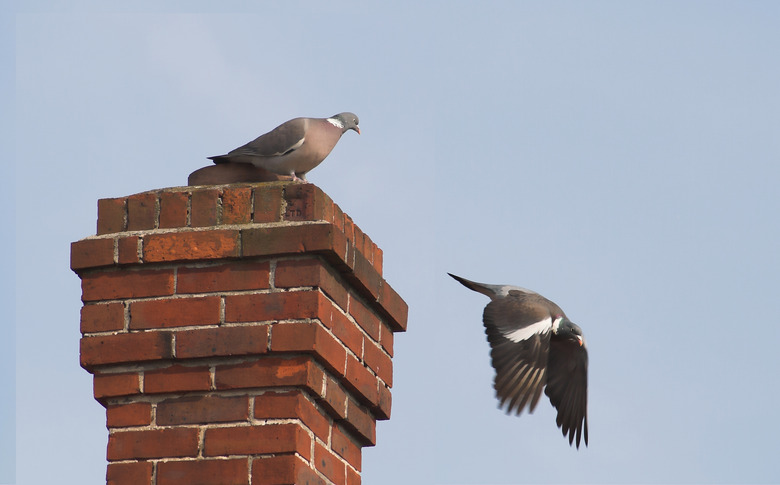How To Get Rid Of Birds In Your Chimney
We may receive a commission on purchases made from links.
So many things that need to be done around your house are easy to ignore because they're out of sight. Basement shelves go unorganized, attic clutter is never untangled, and leaf-filled gutters become a sloppy mess. Hiding out above it all is the chimney you've never capped. But you won't be able to cap it quickly enough once you've had feathered friends drop in for a visit who won't or can't find their way out. You just need to know that choosing how to get rid of or how to deal with birds in your chimney involves consideration of some serious issues that you may find surprising.
Why Birds Get In Your Chimney
Why Birds Get In Your Chimney
Birds wind up in your chimney for different reasons. Some get in unintentionally and because they're unable to expand their wings sufficiently in the small space, they can't fly out and are trapped. Others, mainly chimney swifts, deliberately make the walls of chimneys their nesting place.
Whatever the bird type, getting rid of them isn't as easy as just banging some pans together to scare them out. First, if a trapped bird can't fly out, the noise will make no difference. Second, if you have chimney swifts, it's illegal to interfere with their presence in your chimney.
What to Do About Chimney Swifts
What to Do About Chimney Swifts
The answer to the question, "What should you do if you have chimney swifts?" is simple: nothing. Chimney swifts are on the list of birds protected by the Migratory Bird Treaty Act of 1918, which basically means that you have to leave them alone if you don't want to pay a fine of up to $5,000 or serve up to six months in jail. You can't remove the babies, the adults, or the nest during the breeding period.
Because chimney swifts can perch only vertically, they must build their nests on vertical surfaces. Their entire breeding process takes roughly a month, and you'll start to hear the twittering and cries of the hatched babies about two weeks before they leave the nest. The sound is loud and annoying, but it doesn't last long, and you can make sure you never have to deal with it again by capping your chimney after they're gone.
Dealing With Other Birds
Dealing With Other Birds
You may hear bird activity that sounds not like twittering chimney swifts but like a trapped and struggling bird. In this case, ask your county agriculture extension agent to direct you to a local wildlife rehabilitation organization. These people can identify what's in your chimney and will be licensed to deal with any birds on the federal protected species list.
Even if you can identify the bird as one not on the list, you should get help from a wildlife agent. Trapped birds, especially large ones, can sustain wing and claw damage as they struggle within your chimney. They can become dehydrated and suffer respiratory problems from breathing soot. Removing one that gets into your fireplace and releasing it yourself can result in the bird not getting the care it needs for its injuries.
Things to Remember
Things to Remember
Of course, you shouldn't use your fireplace when there are birds in the chimney, and you should keep the damper closed when the fireplace isn't in use to make sure birds don't fall into the firebox and get into your house around pets and children. After the birds are out of your chimney, have a chimney sweep check the condition of your chimney and clear out nests and debris that could become a fire hazard. Finally, have a cap installed on your chimney to make sure you never have birds or other animals in your chimney again.
